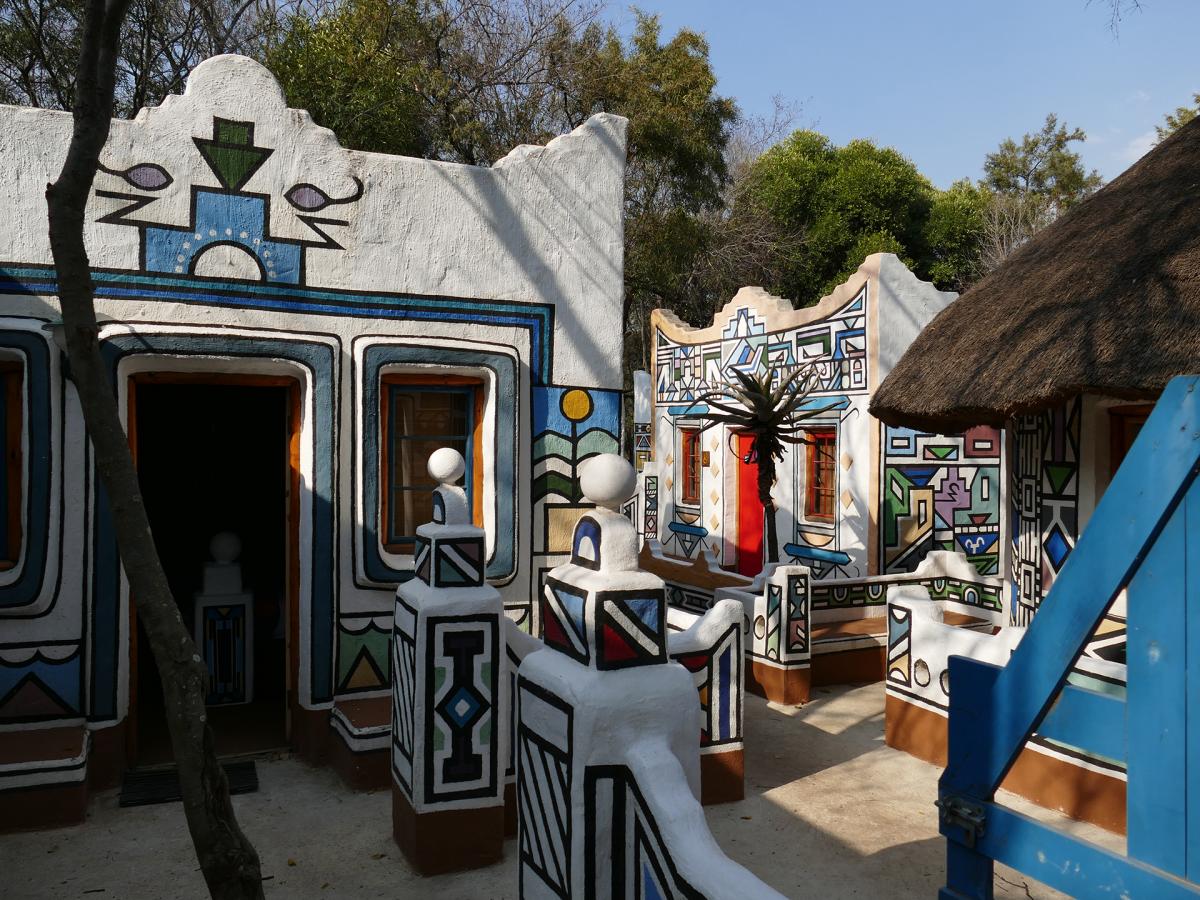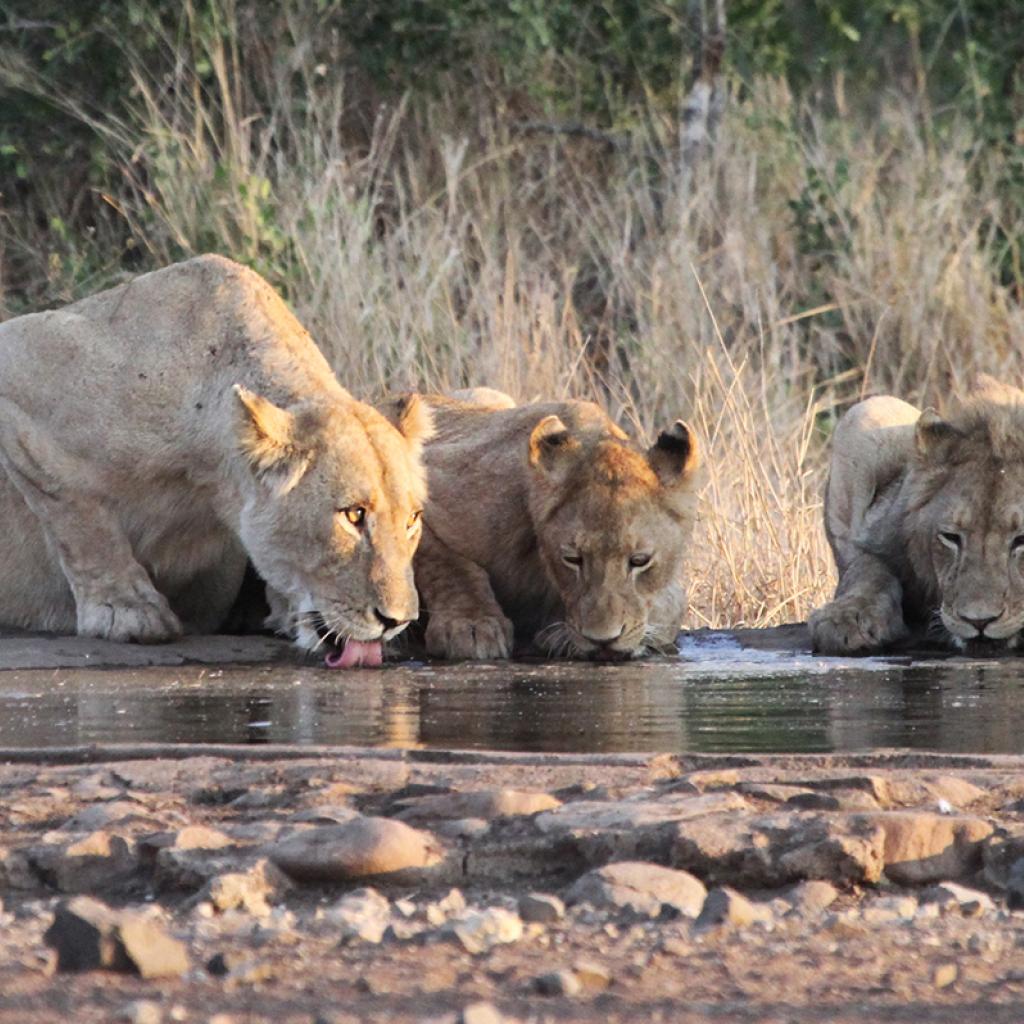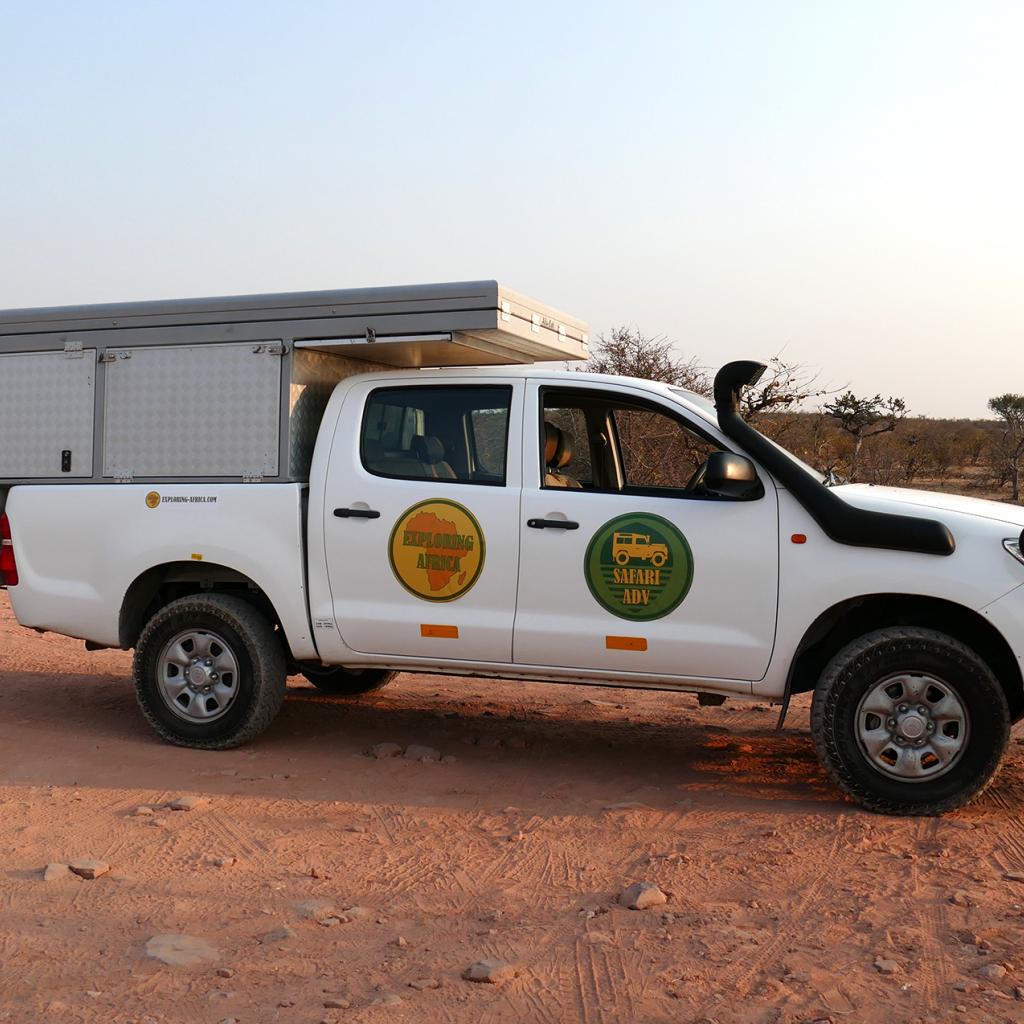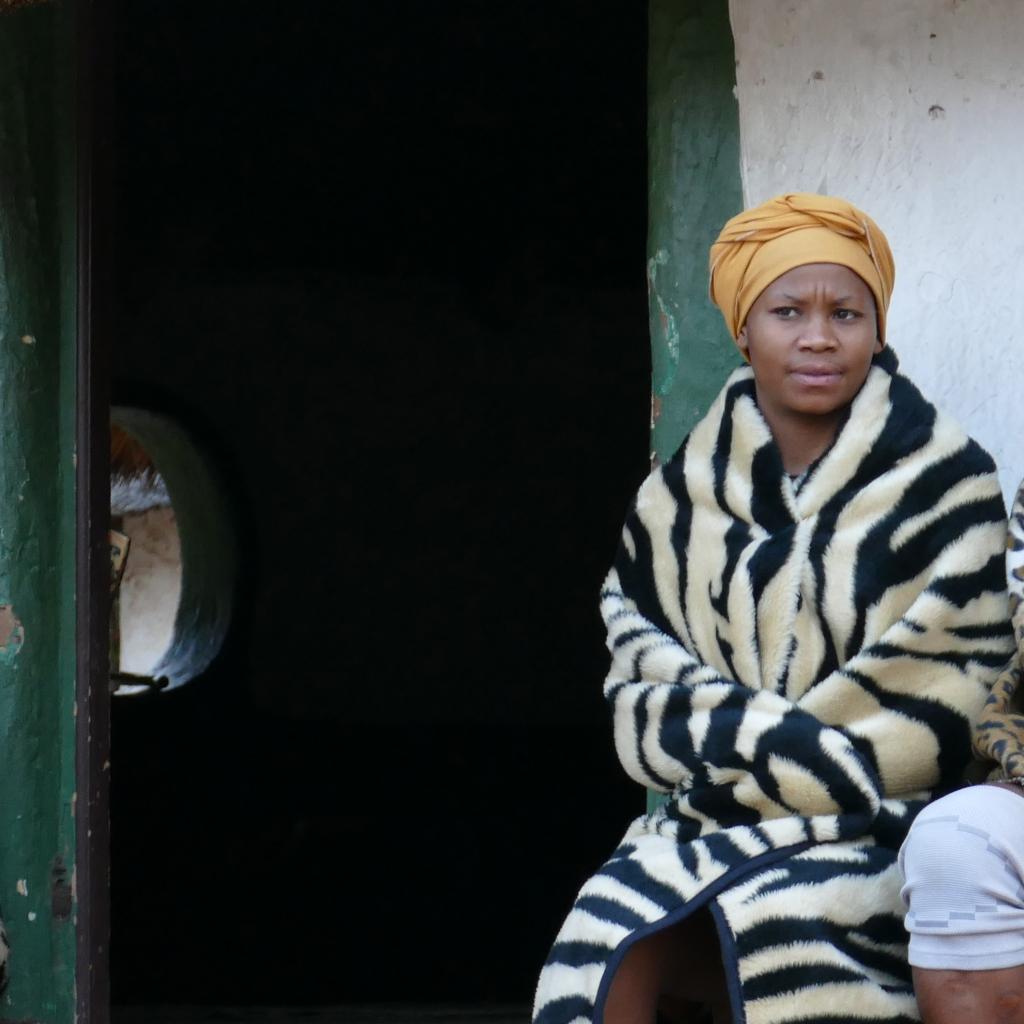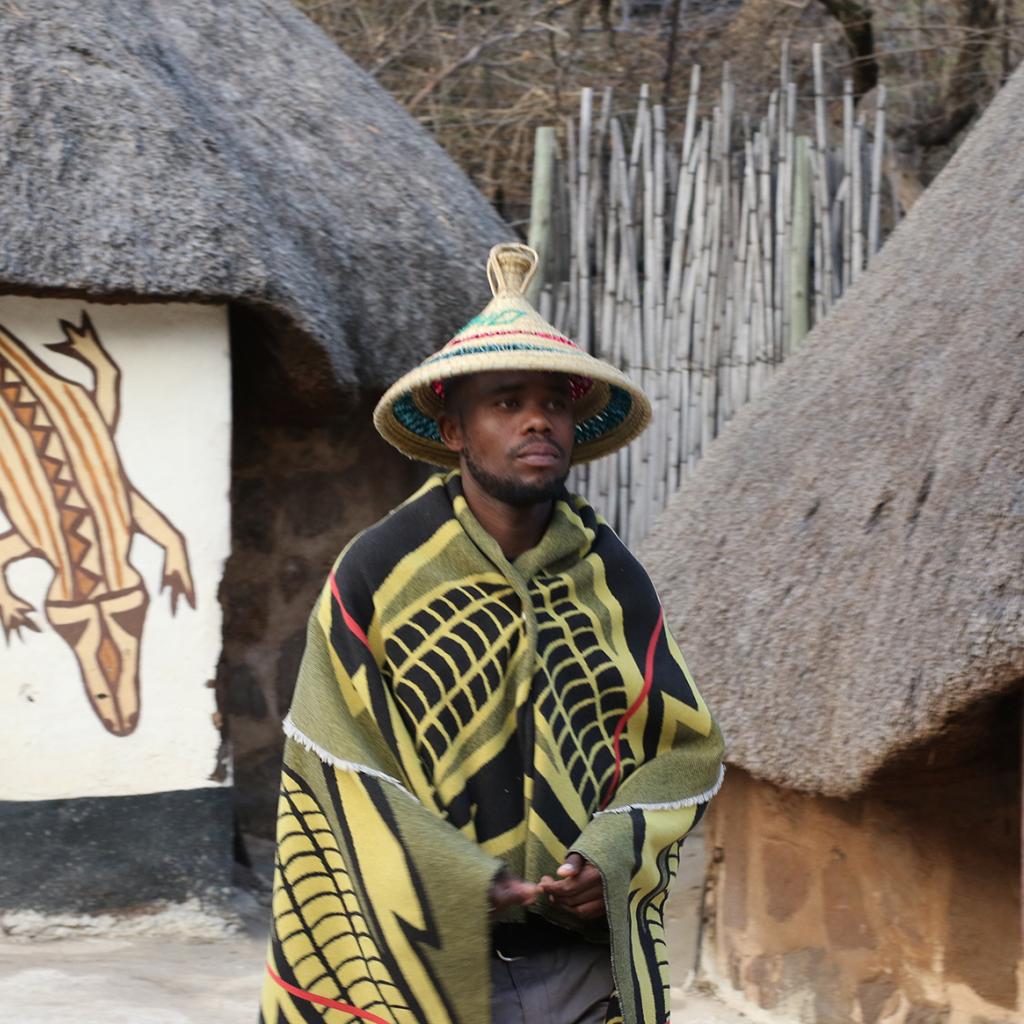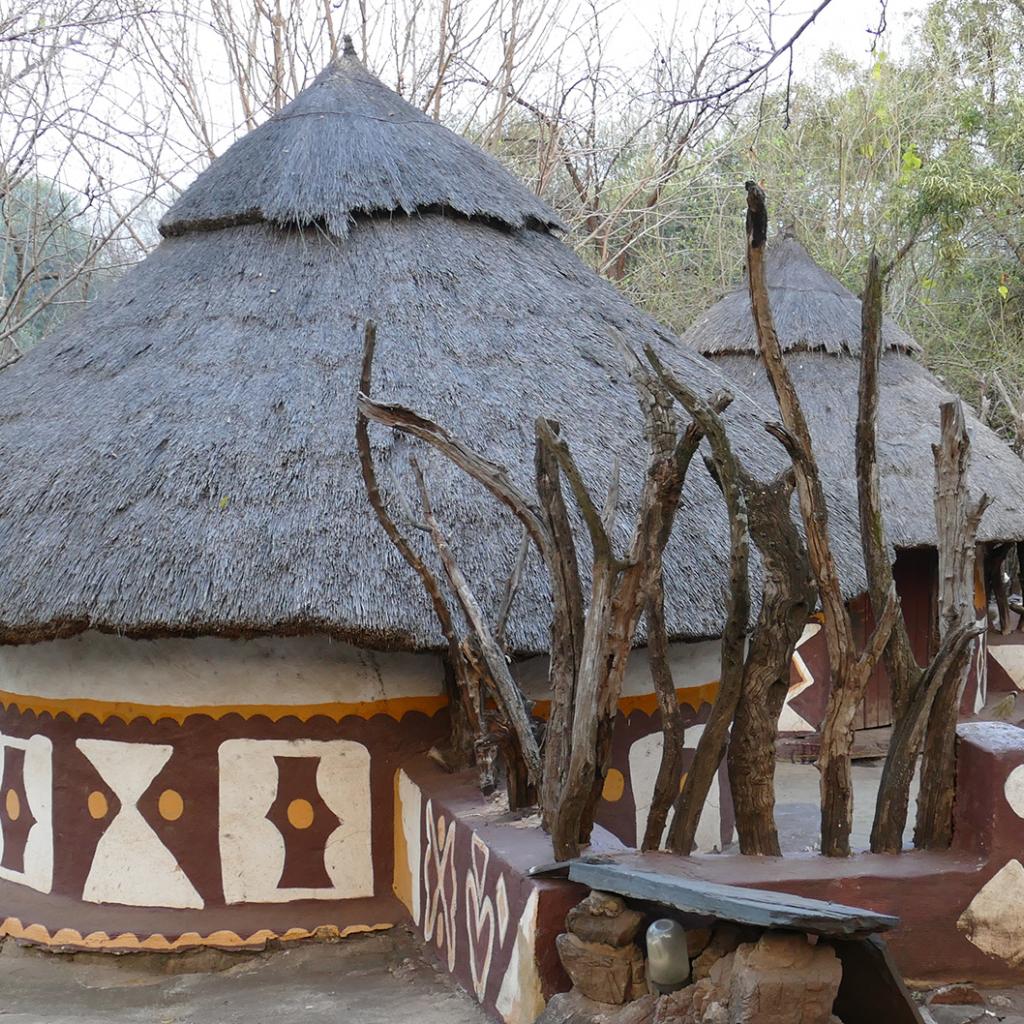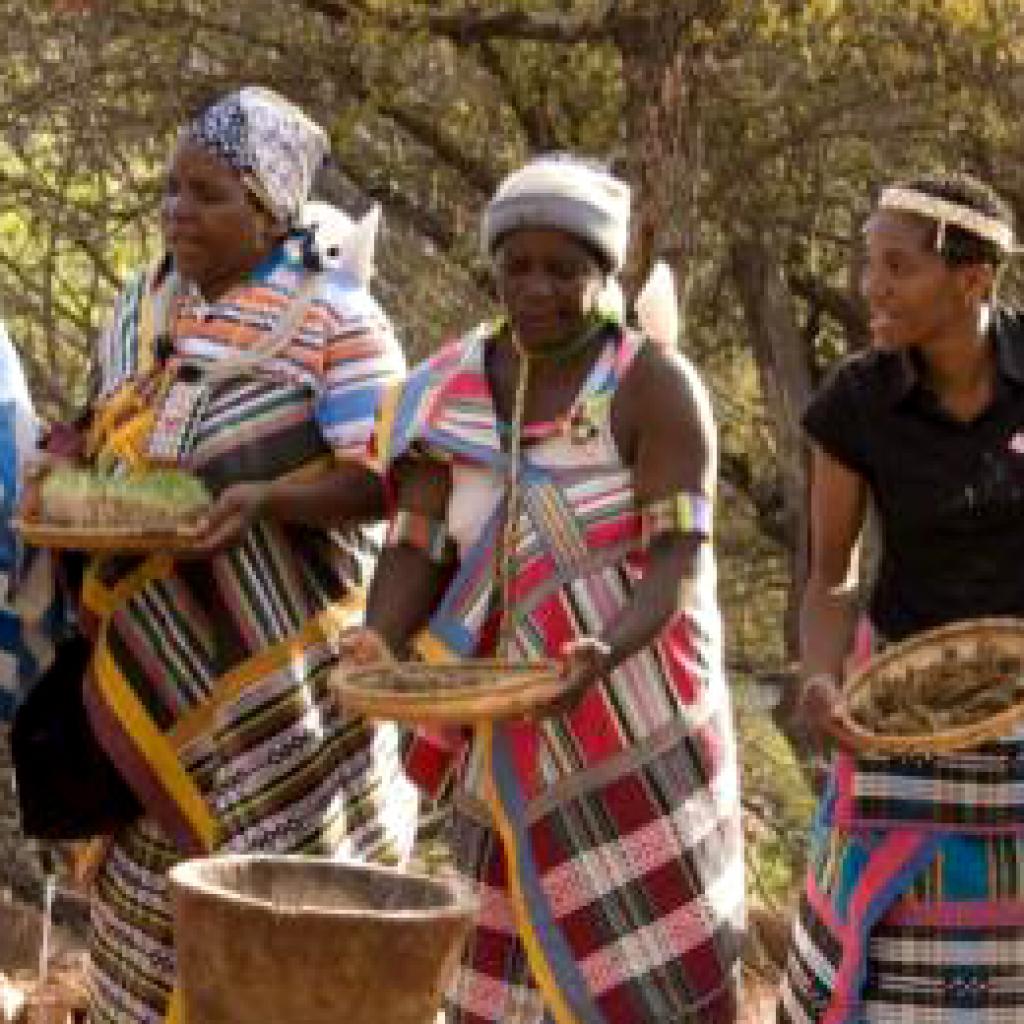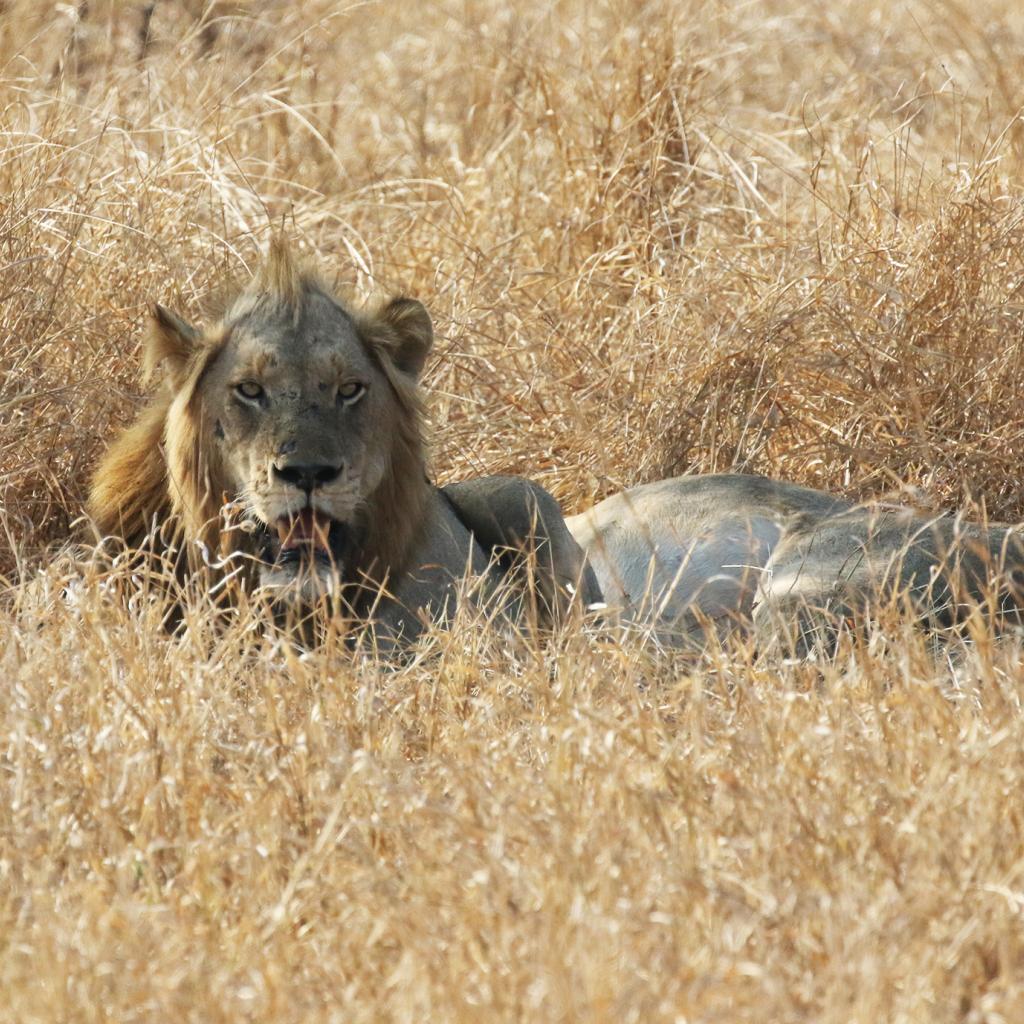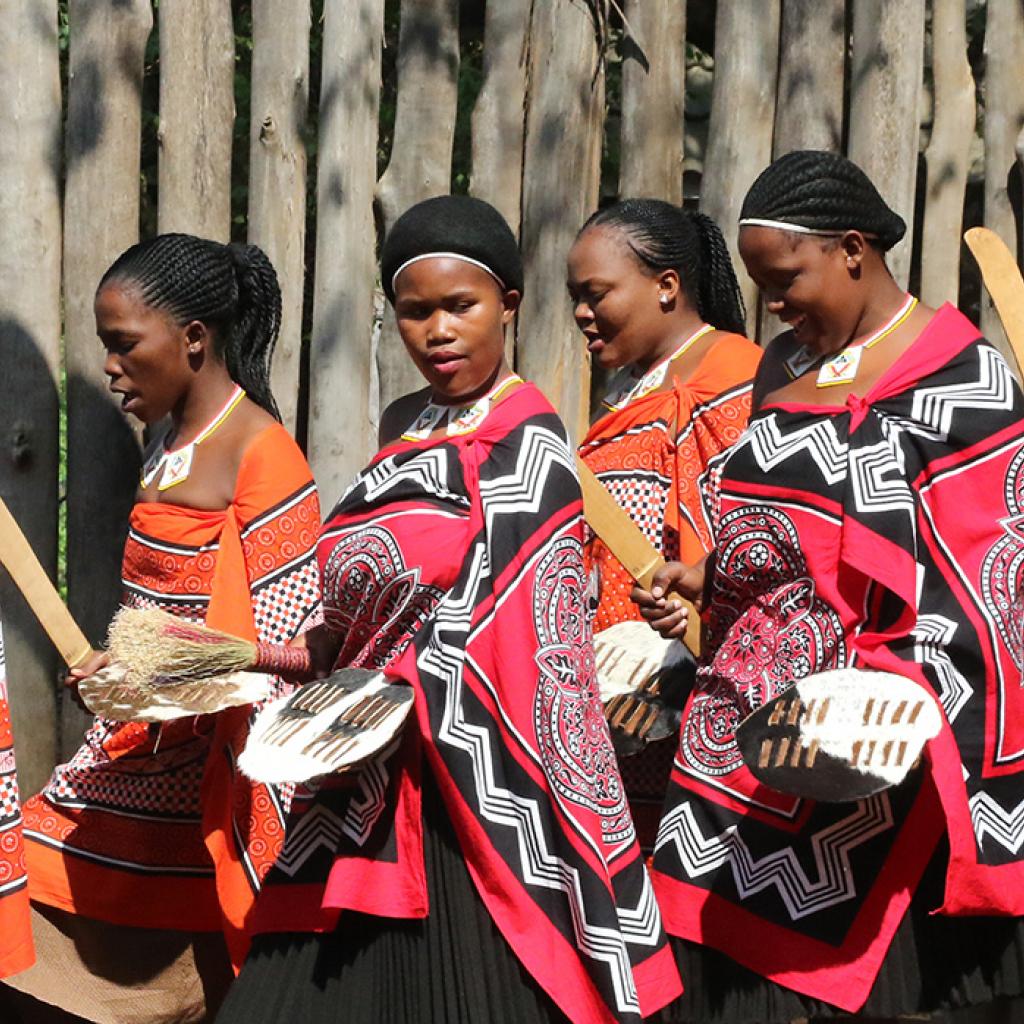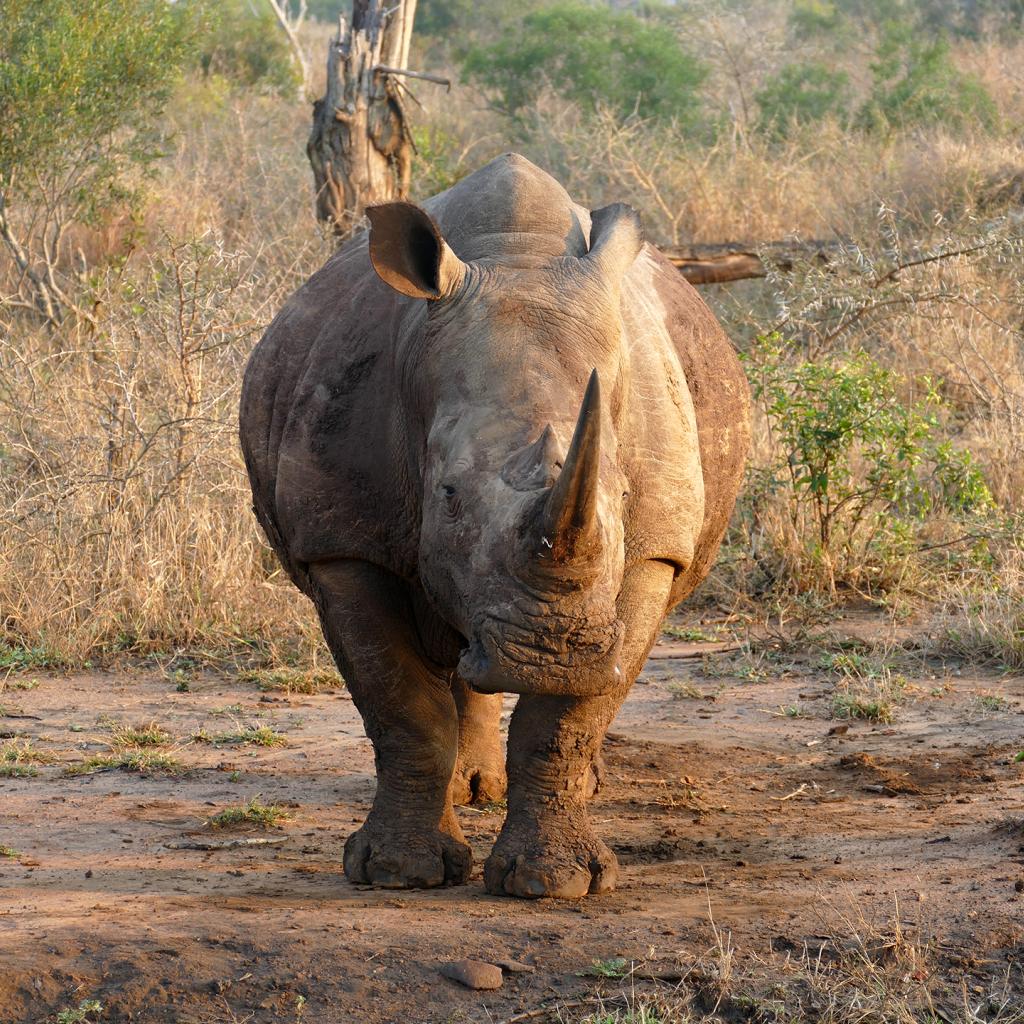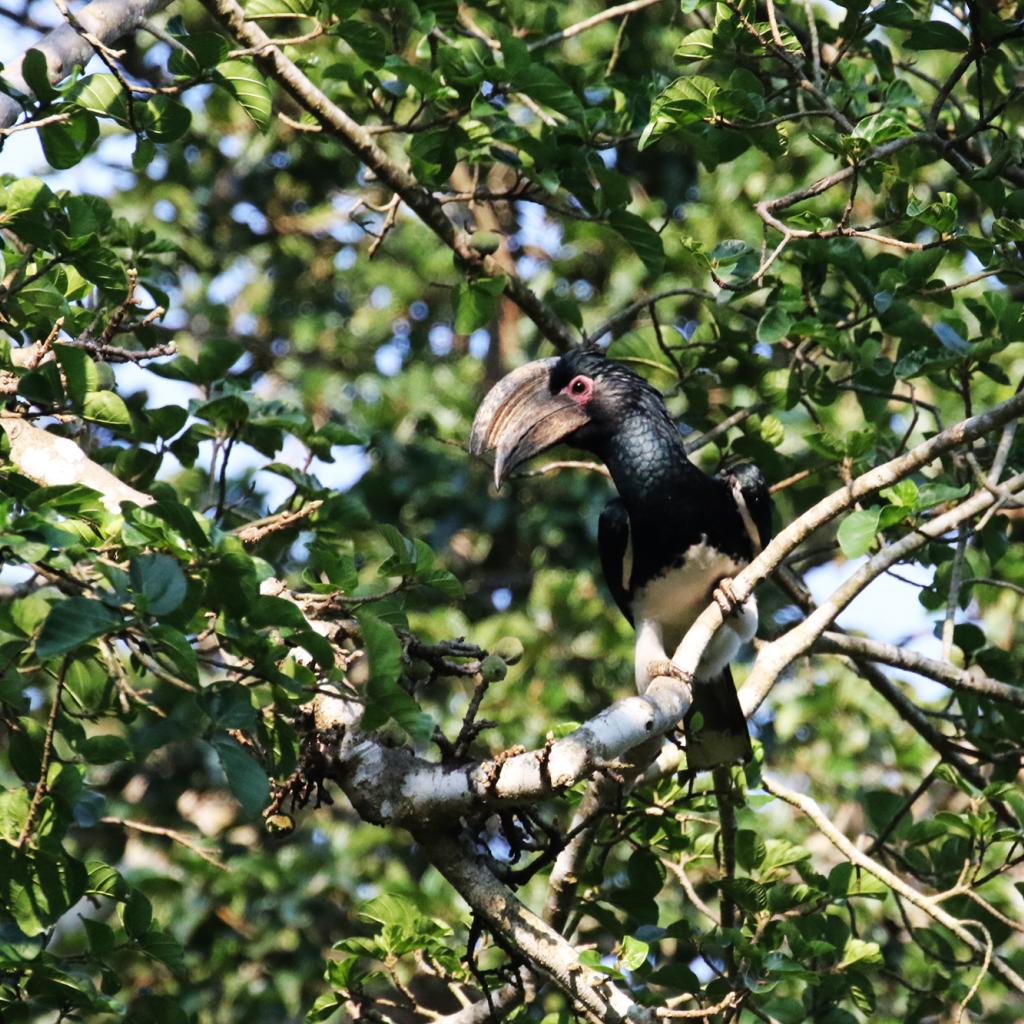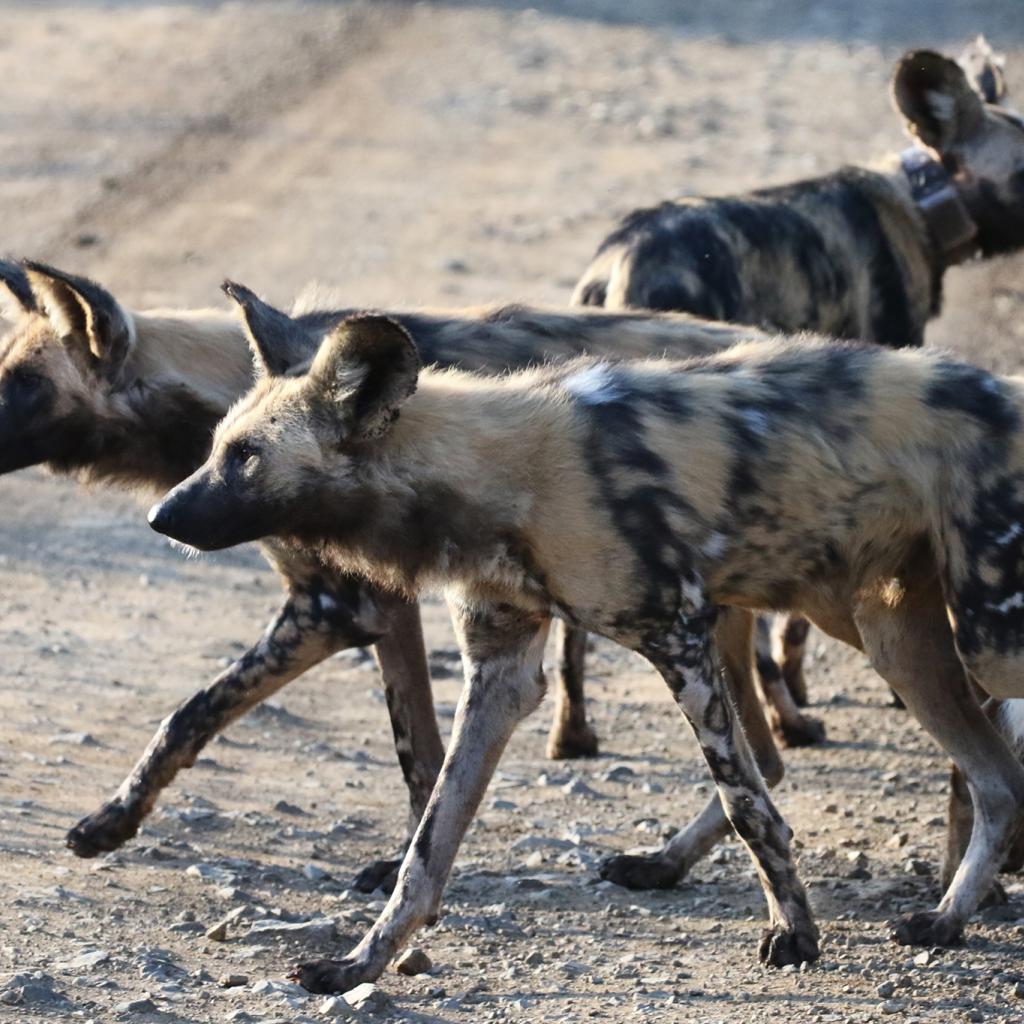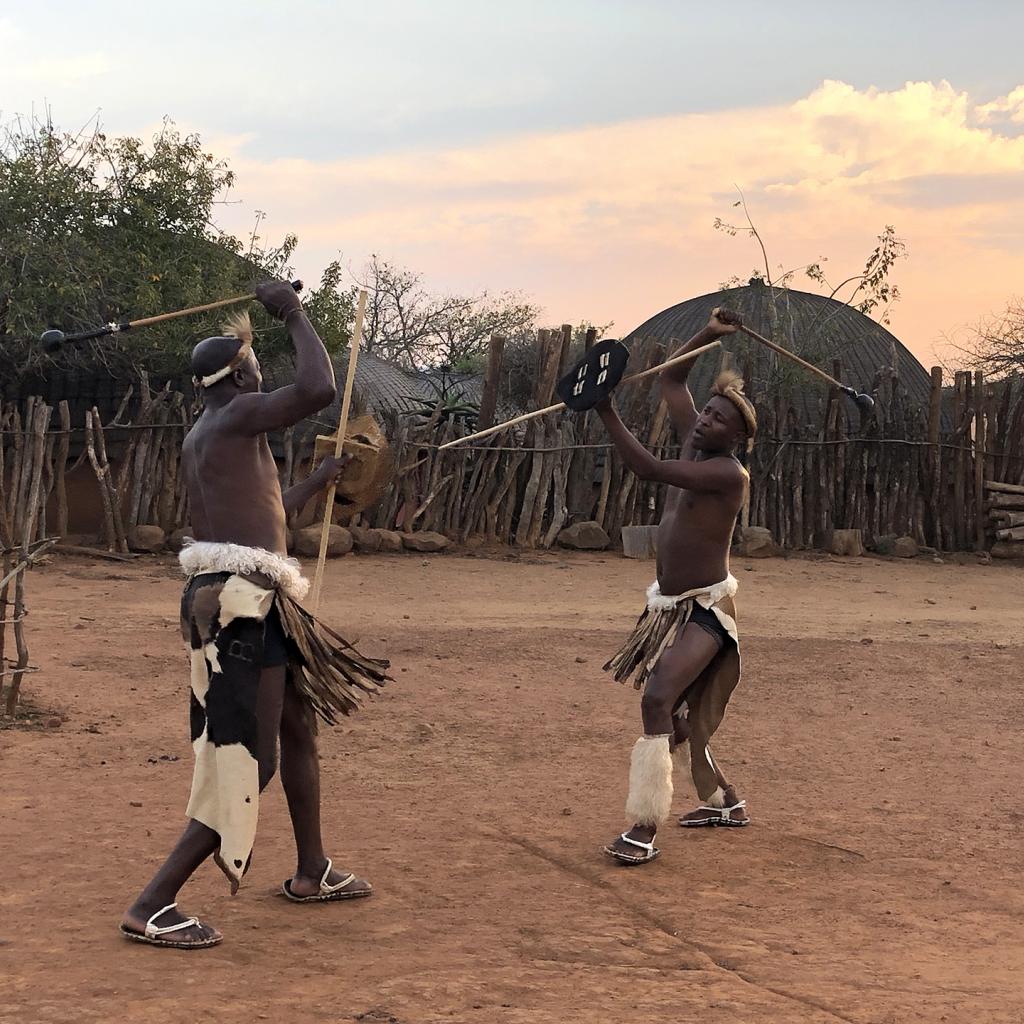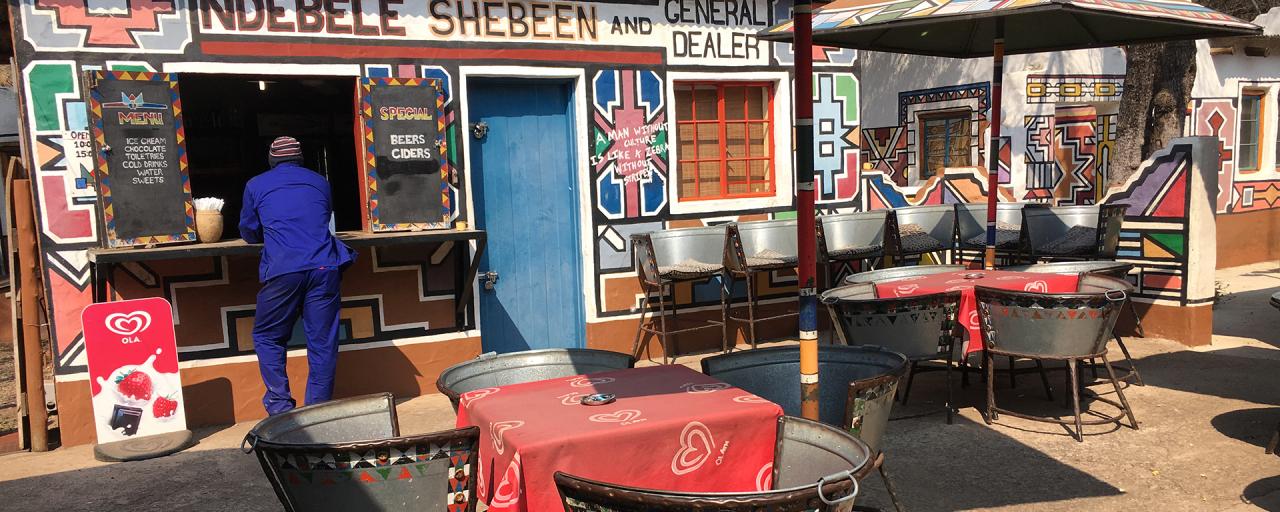
Ndebele - Photo Credits: Romina Facchi
The Ndebele in South Africa
Among the populations and ethnic groups that we were lucky enough to meet on our trip in South Africa, the Ndebele are among the most artistic of all.
The Ndebele, an African ethnic group living in South Africa and Zimbabwe, are in fact known for their artistic talent, especially for painted houses and colored decorations.
In particular, the Ndebele of South Africa have perfected, over time, a tribal art form that, together with the development of used materials, has become the most recognizable characteristic of the entire population.
The reason that pushed the Ndebele to paint their huts with geometric patterns seems to be linked to the need to communicate secretly, without being understood by the Boers, eternal enemies in the wars for the territory.
A sort of code that would allow information to be transmitted and that would not be understood by the Boers, who considered geometric designs a mere decoration.
Other theories want the abstract symbols and patterns of painting to be a way to express the pain of people caused by the war and the constraints imposed by the winners.
These paintings became the expression of cultural resistance, while the Boer farmers, not understanding their meaning and considering this cultural art as decorative and harmless, allowed the Ndebele to continue to paint their huts.
Initially, the drawings were made using natural pigments, that is why the range of colors was rather limited; in addition to the little choice of colors there was a further problem: during the rainy season the natural pigments were erased by the water, therefore, every season, it was necessary to repaint the houses.
With the development of construction techniques and the introduction of acrylics, more resistant to the natural elements and with a wider range of colors, this particular form of art developed enormously and was soon recognized and appreciated all over the world.
At the time of the wars with the Boers the cylindrical huts of the Ndebele were built in mud and were decorated using their fingers to paint; the range of colors ranged from black to gray to brown, but they were mainly the colors of the earth.
It was, and still is, the women deputies to do this job because, traditionally, it is women who take care of the maintenance and care of the house.
The wall paintings, made by women, resumed the motifs of the beads decorations that the Ndebele used on their splendid garments and, besides being a secret code, they communicated the emotions, values and ceremonies of the family such as a marriage.
The symbols that were painted therefore had numerous meanings, but they were never used to represent ancestral or religious rituals.
The painting was initially only carried out on the outer walls, now, with the use of more resistant materials, the Ndebele also paint the interior walls of their homes; mothers hand down this form of art to their daughters and the beauty of the works is considered an indication of the goodness of a woman and a wife.
Women work long and hard to paint the walls of their homes, this is a way to externalize their talent and expression.
The design of the Ndebele walls has evolved over the years, showing growing external influence; today on the walls are also represented the logos of well-known companies.
In some areas of the Northern Provinceof South Africa you can still see the traditional lines of black soot, white and dark red limestone, to which now have been added the blue, dark blue, yellow-gold, green and pink colors.
One of the best places to see this form of art is the Lesedi Cultural Village but also in Mapoch, both not far from Pretoria and Johannesburg.
The geometric patterns and the various designs are drawn starting with the definition of the outline, painted black, then the drawings are filled with the color, the white color is always used as the background of the drawings because it makes the paintings stand out more.
This tradition is still alive and the new generations carry on this form of art, with changes due to the evolution of the materials used and taking into account the changes in society.
